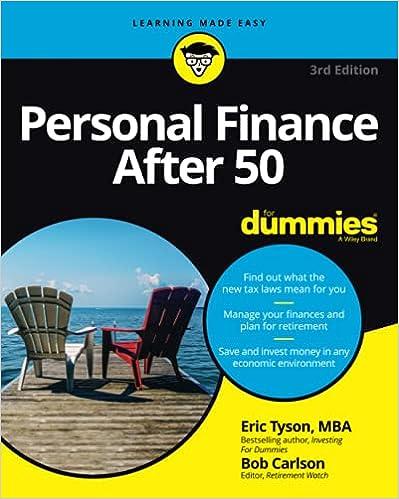Question
INSTRUCTION: Use OptAll program for the following questions. When you open OptAll program, be sure you enable macro. The tabs of the worksheets indicate the
INSTRUCTION: Use OptAll program for the following questions. When you open OptAll program, be sure you enable macro. The tabs of the worksheets indicate the corresponding option pricing models or exotic options. As demonstrated in the past two classes, the OptAll program is fairly straight forward to use. Enter the required inputs and the results will be automatically calculated. We have studied these options in Module 3. You may (and should) apply the OptAll program to the previous Module 3 PowerPoint Slide/Excel example questions and/or Assignment questions first to ensure you are able to use this program correctly.
(Complete the following 7 Questions. Each question is worth 15 Points (that is, 5% extra credit).)
Let S = $100, K = $95, r = 8% (continuously compounded), ? = 30%, ? = 0, T = 1 year, and n = 3 (# of steps). a. Use OptAll program to calculate the binomial option price for a European call option as well as the binomial option price for an American call option. What are their prices? Why their prices are the same (or not the same)? b. Use OptAll program to calculate the binomial option price for a European put option. What is the price? c. Use OptAll program to calculate the binomial option price for an American put option. What is the price?
Repeat the previous problem assuming that the stock pays a continuous dividend of 8% per year (continuously compounded). Calculate the prices of the American and European puts and calls.
Suppose S = $100, K = $95, ? = 30%, r = 0.08, ? = 3%, and T = 0.75. What is the Black-Scholes price of a European call? What is the Black-Scholes price of a European put?
Consider a bull spread where you buy a 40-strike call and sell a 45-strike call. Suppose ? = 0.30, r = 0.08, ? = 0, and T = 0.5. a. Suppose S = $40. What are delta, gamma, vega, theta, and rho for each call and the bull spread? (Note: The greeks of the bull spread are simply the sum of the greeks of the individual options. The greeks of the call with a strike of 45 enter with a negative sign because this option was sold.) b. Suppose S = $45. What are delta, gamma, vega, theta, and rho for each call and the bull spread?
Refer to the Asian Options example on PowerPoint slide 14-9. If N=100, what are the premiums of at-the-money geometric average price and geometric average strike calls and puts?
Let S = $40, K = $45, ? = 0.30, r = 0.08, ? = 0, and T = 0.25. What are the prices of knock-out options (up-and-out call and put and down-and-out call and put) with a barrier of $38? What are the prices of knock-in options (up-and-in call and put and down-and-in call and put) with a barrier of $38? What are the Black-Scholes Call and Put Prices?
Let S = $40, K = $40, ? = 0.30, r = 0.08, ? = 3%. (a) What is the price of a standard European call with 2 years to expiration? (b) Suppose you have a compound call giving you the right to pay two dollars 1-year from today to buy the option in part (a). For what stock prices in 1-year will you exercise this option? (c) What is the price of this compound call (call on call)? (d) Suppose you have a compound put giving you the right to pay two dollars 1-year from today to sell the option in part (a). For what stock prices in 1-year will you exercise this option? (e) What is the price of this compound put (put on call)?
Step by Step Solution
There are 3 Steps involved in it
Step: 1

Get Instant Access to Expert-Tailored Solutions
See step-by-step solutions with expert insights and AI powered tools for academic success
Step: 2

Step: 3

Ace Your Homework with AI
Get the answers you need in no time with our AI-driven, step-by-step assistance
Get Started


